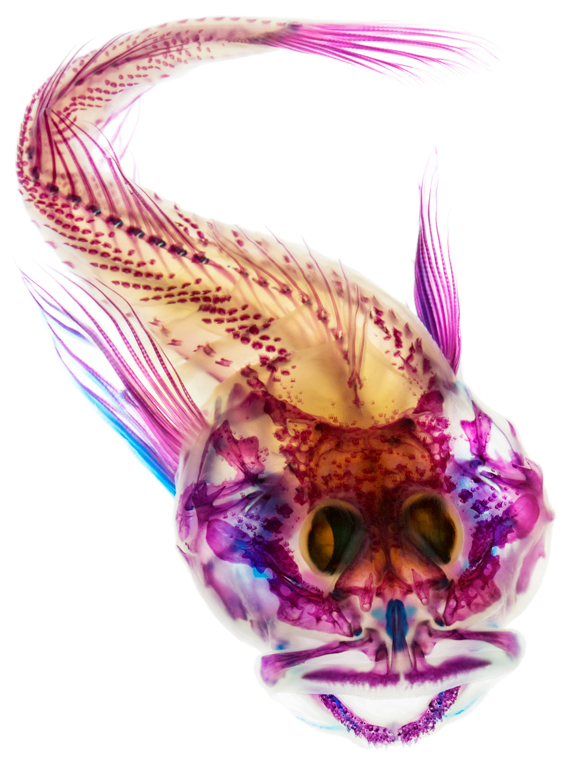A Fish's Armor
By Robert Frederick
Clearing and staining the scalyhead sculpin reveals defensive solutions that are highly mobile.
Clearing and staining the scalyhead sculpin reveals defensive solutions that are highly mobile.

DOI: 10.1511/2016.120.140
Adam Summers has studied the inner structures of thousands of creatures to see how they work. Along the way, he’s learned that the most advanced imaging techniques are not always the most useful ones. Dissecting a specimen or using x-rays to scan it can reveal a great deal of detail, but “there’s only one way to look directly at the three-dimensional structure of hard and soft tissue without destroying it,” he says. That winner is an unglamorous set of chemical steps known as clearing and staining. At the University of Washington’s Friday Harbor Labs, Summers has refined the decades-old approach into a thoroughly modern visualization tool. The scalyhead sculpin, Artedius harringtoni, shown below is a prime result.

For clearing, Summers used trypsin—a digestive enzyme found in your intestines—that attacks most proteins but leaves the collagen that holds together skin and bones. For staining, he applied the dyes Alcian blue, to highlight cartilaginous elements, and alizarin red S, for mineralized tissue. Preserving the specimens was accomplished with formalin, a clear aqueous solution of formaldehyde and a bit of methanol. Then Summers bleached the remaining parts of the fish with hydrogen peroxide and immersed it in glycerin. Because glycerin has the same index of refraction as collagen, the collagen becomes as clear as water, allowing a view through the skin. “It’s a technique I use all the time, but I learn different things with every species,” Summers says.
In this case, he examined the scalyhead sculpin’s armor, which evolved to protect it from attack, particularly from above and behind. If that defense doesn’t work, Summers notes, the sculpin has a “seriously sharp” preopercular spine that points straight out and away when the fish opens its gill coverings. The clarified fish may also prove useful to engineers: Its armor may inspire new types of protective coverings.
Click "American Scientist" to access home page
American Scientist Comments and Discussion
To discuss our articles or comment on them, please share them and tag American Scientist on social media platforms. Here are links to our profiles on Twitter, Facebook, and LinkedIn.
If we re-share your post, we will moderate comments/discussion following our comments policy.